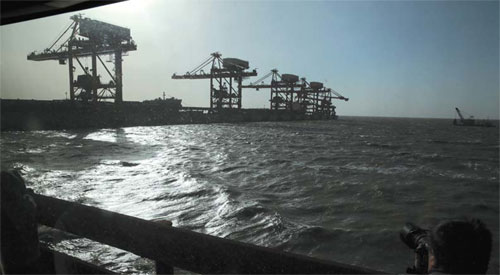Beijing creates draft industry transfer list
Business sectors to move to Hebei to cut pollution, optimize economy
Local officials studied the general plan for Beijing-Tianjin-Hebei integration, which was passed by the Political Bureau of the Central Committee of the Communist party of China, at a conference held by the Communist Party of China Beijing Municipal Committee on June 13.
As part of the integration plan, the Ministry of Industry and Information Technology is preparing a list of industries to be transferred from Beijing to Hebei province, which include IT, logistics, finance, cultural creativity, leisure, education and sports industries.
The move is expected to cut pollution for Beijing and optimize the economic structure of all provinces and cities in the greater region, and make it more economically sustainable, said Shen Yunchang, vice-president of China Commerce Think Tank.
Beijing started controlling industrial pollution by moving some industries, including chemicals, power and cement-production, out of the city in 2002 in preparation for the 2008 Olympics.
At the time it was considered a win-win move as Beijing cut its pollution levels, while Hebei got more revenue from the industries. However, as Hebei gradually suffered environmentally people began questioning if the transfer simply moved pollution from one city to another without solving the problem.
Zhu Er'juan, a professor at the Capital University of Economics and Business, found that Beijing has a different economic structure from neighboring Tianjin and Hebei, which he said causes economic imbalance in the whole region. While the service sector accounts for about 80 percent of Beijing's economy, it accounts for 50 percent in Tianjin and 40 percent in Hebei.
The new list of industries will hopefully solve this problem by moving not only heavy industries, but also service enterprises to Hebei and Tianjin, said Shen.
He added that the plan marks a breakthrough as it uses the opportunity to transfer and upgrade industries, requiring enterprises in the greater region to work for high-tech production. Shen said this was the only way for the region to build industrial clusters that are globally competitive.
To create the list, the Ministry of Industry and Information Technology studied the industries carefully to select and match conditions in Tianjin and Hebei, said Li Feng, a researcher on industrial transfer at Hebei University of Technology. Some cities in Hebei, like Zhangjiakou, have a good basis for sports and leisure industries, making them more suited for transfer, said Li.
He added that there were also challenges. Distribution of financial resources will be a key problem, he said, because it involves many bureaucratic systems and it may meet resistance from them. "I hope leaders of all three regions can coordinate and set a brilliant example for the whole nation," Li said.
zhangzhouxiang@chinadaily.com.cn
|
The newly developed Caofeidian Port in Tangshan, Hebei province, now serves as the major ocean transportation hub for Beijing. Jiang Dong / China Daily |
(China Daily 06/19/2015 page10)















